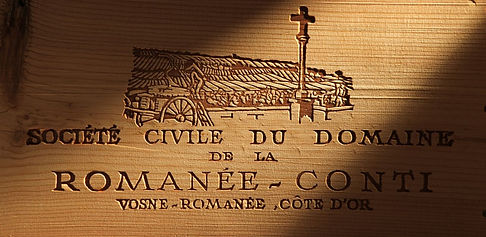

S
A B C D E F G H I J K L M N O P Q R S T U V W X Y Z
SAIN-SASS
SAAL-SAIN SAIN-SAIN SAIN-SASS SASS-SAVO SAXU-SCRE SCRE-SICI SIGN-SONO SONO-STAG STAG-SUPE
Only 4,5 and 5,0 NJP wines (Nenad Jelisic Points) are presented as the best vintages.
If for some wine behind “the best vintages” stands “none”, it means that none of the wine's vintages got 4,5 NJP or 5,0 NJP.
Saint-Péray grapes, Marsanne and a little Rousanne. (2011-01)
Saint-Péray soils, clay, loess, granite and limestone on top of granite bedrock. (2011-01)
Saint-Péray the best vintages, 1929, 1947, 1978, 1999, 2003, 2009, 2010 and 2015. (2018-11)
Saint-Véran, a French appellation that belongs to the wine district of Mâconnais, which in turn belongs to the wine region of Burgundy. The appellation has no Premier Cru-vineyards and Grand Cru-vineyards.
Saint-Véran grapes, just Chardonnay.
Saint-Véran soils, calcareous soil.
Sainte Croix du Mont, a French appellation that belongs to the wine area of Entre-Deux-Mers, which in turn belongs to the wine region of Bordeaux.
Sainte Foy Bordeaux, a French appellation that belongs to the wine area of Entre-Deux-Mers, which in turn belongs to the wine region of Bordeaux.
Salicutti, Piaggione, Brunello di Montalcino (red dry wine; 100% Sangiovese), Tuscany, Italy, the best vintages, 2004, 2010 and 2013. (2019-02)
Salon, see Champagne Salon. (2014-06)
Saltram, Sweet White Show, NV (white sweet wine; 100% Semillon), Barossa Valley, South Australia, Australia, the best vintages, the wine has a consistent and very high quality. (2017-10)
Salvioni, La Cerbaiola, Brunello di Montalcino (red dry wine; 100% Sangiovese), Tuscany, Italy, the best vintages, until vintage 2009 none; 2010 and 2011; not 2012 and 2013. (2019-02)
Sancerre, a French appellation that belongs to the wine district of the Upper Loire, which in turn belongs to the wine region of the Loire. The appellation has 2,903 hectares planted with vine. The appellation for white wines was created in 1936 while the appellation for rosé and red wines was created in 1959. The average yield is 58 hl/ha. (2016-09)
Sancerre grapes, 79% Sauvignon Blanc and 21 % Pinot Noir. (2016-09)
Sancerre soils, there are three different types of soil: Kimmeridgian marl (terres blanches = "white soil"), flint-rich clay (silex), Kimmeridgian rocky limestone (caillottes). The local variations i.e. degree of weathering of Kimmeridgian limestone and marl, make the wines taste different from area to area. (2016-09)
San Giusto a Rentennano, Chianti Classico (red dry wine; 100% Sangiovese), Chianti Classico, Tuscany, Italy, the best vintages, until vintage 2016 none. (2018-11)
Santa Cruz Mountains, a US appellation (AVA) that belongs to Santa Cruz County (Santa Cruz Mountains) wine district, which in turn belongs to the Central Coast wine region in California. Santa Cruz Mountains was given its AVA status in 1981. The appellation has about 194,000 hectares and of these, about 526 hectares are planted with grapes. It has an oceanic climate (maritime climate). The appellation's vineyards are located at a height of between 120 and 820 meters above sea level. At these heights, day temperatures are lower than in the valley below. Nights, on the other hand, are somewhat warmer, because the chilly fog from the Pacific Ocean does not reach here. These temperature variations help to that the grapes mature slowly and evenly. The end result is wines with a good tannin structure, a good balance and a good acidity. (2017-10)
Santa Cruz Mountains grapes, Pinot Noir ca 25%, Cabernet Sauvignon ca 25% and Chardonnay ca 25%. To the others most cultivated grapes belong Merlot and Zinfandel. (2017-10)
Santa Cruz Mountains soils, varies from weathered volcanic and sedimentary rocks, loess to limestone. Except for loess, all the aforementioned soils are well-drained and poor in nutrients. (2017-10)
Santa Cruz Mountains the best producer, Ridge Vineyards. (2017-10)
Santa Rita, Casa Real, Cabernet Sauvignon (red dry wine), Maipo Valley, Chile, the best vintages, until vintage 2014 none. (2018-11)
Sardinien, an Italian wine region that consists of two appellations: Cannonau di Sardegna and Monica di Sardegna.
Sassicaia, an Italian wine that comes from the wine producer Tenuta San Guido in Bolgheri. Once classified as Vino da Tavola (Vino da Tavola = table wine) and now classified as DOC (DOC Bolgheri Sassicaia). The wine is considered to be one of Italy's best, most expensive and most sought after red wines. In 1978, the wine won the English prestigious wine magazine "Decanter" Cabernet Sauvignon-competition as the world's best Cabernet Sauvignon-wine. The wine's exceptional high quality is achieved through very low yields (ca 30 hl/ha) and aging in 225 litres French oak barrels (33% new) for two years and 6 months in bottle respectively. Sassicaia has a great aging potential. The strange thing is that the wine, a few years ago, belonged to the lowest Italian wine class (Vino da Tavola) because the producer used/use, for the wine region of Tuscany, then unapproved grapes (85% Cabernet Sauvignon and 15% Cabernet Franc). Sassicaia began to be produced as early as 1948 as the family della Rocchetta’s house wine, but not before 1968, it began to be commercially sold. Today, the production is about 200,000 bottles. (2013-06)
Sassicaia (Bolgheri Sassicaia), an Italian DOC-appellation that belongs to the wine region of Tuscany. (2013-06)


NJ Wines
 |  |  |  |  |  |
|---|